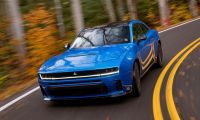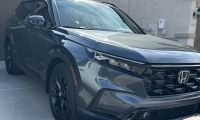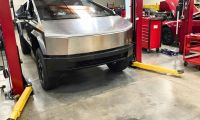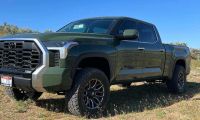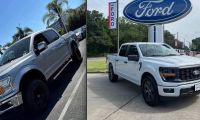According to a report coming out of China, Tesla is planning to transition its China-made Model 3s to lithium-iron-phosphate(LFP) batteries. This move is expected to take place within the next few days.
The LFP batteries have several advantages over current cells used by Tesla. For starters, LFP batteries don’t use cobalt. Over the years this mineral has been linked with child miners and it was a point of contention at Tesla’s last shareholders’ meeting.
In addition to its social issues, Cobalt is also expensive. So removing it means a cheaper battery.
And as Tesla tries to make its cars reach a wider audience, this point is becoming even more important.
Another advantage of LFP batteries is their long cycle life. Tesla is expected to launch its full self-driving ride-hailing network soon. This will increase the utility of cars by several folds. And in this respect, the long cycle life becomes even more important.
Tesla’s supplier for these batteries is expected to be China’s CATL. And back in June CATL announced it will start making batteries that can go over 1.2 million miles. We expect Tesla is buying these long cycle life batteries.
Yet another advantage of these batteries is the easy availability of iron. Tesla currently uses nickel manganese cobalt or nickel cobalt aluminum batteries in its products. This exposes the company to Nickel shortages. But with this new battery, the company can avoid those pitfalls by using iron.
By this time LFP batteries seem perfect but they have one notable drawback. As compared to nickel, iron has only half the energy capacity for the same weight. This makes it a challenge to produce long-range or highly weight-sensitive products.
As a result, for years Tesla had shied away from using them. But in the past few years, Tesla has obsessively been improving the efficiency of its cars. And as a result, the company is now able to produce cars that can go close to 300 miles with the LFP batteries.
Speaking about this on Tesla’s last earnings call Elon Muk said “What we're seeing with our passenger vehicles is that our powertrain efficiency, tire efficiency, drive coefficient, HVAC, going to a heat pump, basically our total vehicle efficiency has gotten good enough with Model 3, that we are comfortable having an iron phosphate battery pack in Model 3 in China.”
Musk continued to say “that will be in volume production later this year. So we think getting a range that is in the high 200 -- almost 300 miles with an iron phosphate pack, taking into account a whole bunch of powertrain and other vehicle efficiencies, is possible.”
With this approach, Tesla can hedge its bets on the mineral markets. Also, the freed up high energy nickel cathode cells can go to produce things like the upcoming Tesla semi.

Musk speaking about moving to LFP cells in China said “that frees up a lot of capacity for things like the Tesla Semi and the other projects. so you have two supply chains that you can tap into. Iron phosphate or nickel. We use very little cobalt in our system already, and that may go to zero”
And what Musk said back in June now seems to be taking effect. Soon this new Model 3s with the LFP batteries are expected to supply the Chinese market. And according to a leak, these cars might be shipped out to other countries in Asia, Singapore, Australia, New Zealand, and European markets.
Because all the named countries are right-hand drive, here we have made the prediction Tesla will be moving production of right-hand drive Model 3s to China.
So what do you think is it a smart move for Tesla to transition its China-made Model 3s to LFP batteries? Or is the weight and range tradeoff too much? Let me know your thoughts down in the comments below.
For more information checkout: Walmart announces it is tripling Tesla Semi orders. Also, see How Volkswagen’s move to electrify its fleet means Lamborghini and Bugatti might get the axe.
Tinsae Aregay has been following Tesla and The evolution of the EV space on a daily basis for several years. He covers everything about Tesla from the cars to Elon Musk, the energy business, and autonomy. Follow Tinsae on Twitter at
@TinsaeAregay
for daily Tesla news.








